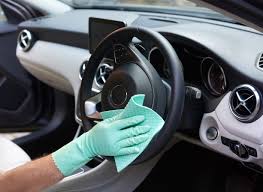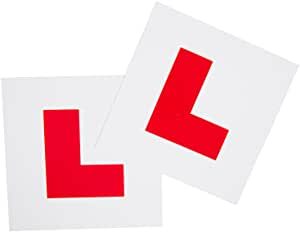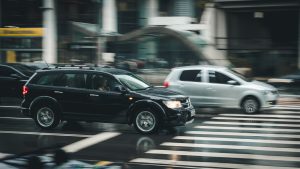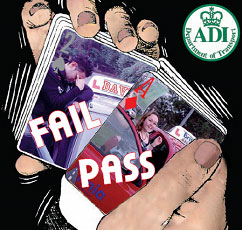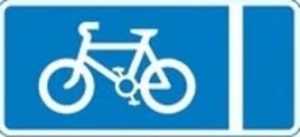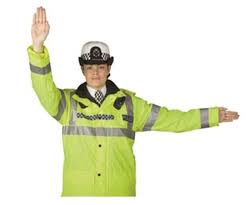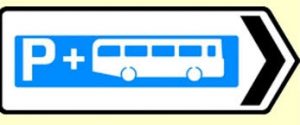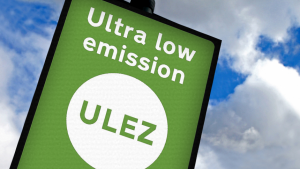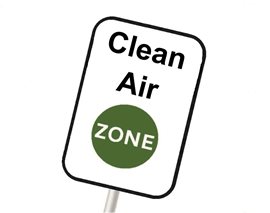Snowy conditions can make driving a real challenge for motorists and can even lead to an accident.
With this in mind it is crucial to prepare yourself adequately before embarking on a journey in the snow.It is worth knowing how to prepare yourself and your car, while also considering different ways to approach your driving when faced with adverse conditions.
You’re late for work or just need to pop to the shops in the car – but it’s covered in snow and ice.
The bottom line is you need a clear view of the road before setting off, you can’t make any shortcuts.In the eyes of the law, you need to clear that snow before you go.
There is no road law that says it is illegal to drive with snow on your car.However, the Highway Code stipulates that if driving in adverse weather conditions you must, by law, be able to see out of every glass panel in your vehicle.This is supported by the section 41D of the Road Traffic Act 1988, meaning it is a legal requirement to have a clear view of the road ahead before you set off.
Failure to do so could incur a fine, but more importantly could place your life, the lives of your passengers and the lives of those around you in danger.This also means ensuring your windscreen is de-iced on the outside and thoroughly demisted on the inside.
This is supported by the section 41D of the Road Traffic Act 1988, meaning it is a legal requirement to have a clear view of the road ahead before you set off.
As for the snow on the roof, while, again, there is no law stating it is illegal to drive with snow on your roof, if it falls off onto your windscreen while driving or flies into the path of another car then you could be penalised for such offences as ‘driving without due consideration’ or ‘using a motor vehicle in a dangerous condition’ – again, not worth the risk.
Even if you’re only making a two-minute journey, by not thoroughly cleaning your car of snow, ice or condensation – including all windows, lights and even anything that could fall off into the path of another motorists – you’re breaking the law and leaving yourself liable to a run in with the police.
That means fully wiping snow or frost from every window (a quick once over with a credit card or CD case is not good enough!).
As for the snow on the roof, while, again, there is no law stating it is illegal to drive with snow on your roof, if it falls off onto your windscreen while driving or flies into the path of another car then you could be penalised for such offences as ‘driving without due consideration’ or ‘using a motor vehicle in a dangerous condition’ – again, not worth the risk.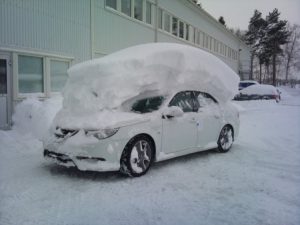
Even if you’re only making a two-minute journey, by not thoroughly cleaning your car of snow, ice or condensation – including all windows, lights and even anything that could fall off into the path of another motorists – you’re breaking the law and leaving yourself liable to a run in with the police.
That means fully wiping snow or frost from every window (a quick once over with a credit card or CD case is not good enough!).As well as the legal implications of not being able to see out of your window clearly, if you are involved in an accident it could mean you are at fault and if your car insurance company finds you were at fault through neglecting to properly prepare your vehicle, they could potentially withhold a pay-out.
In addition, it is also the law that all lights and number plates are clearly visible too.In the murky grey light that often comes with driving in wintery conditions it’s advisable to drive with your sidelights or dipped headlights on so as other drivers can see you.Without this they might miss you as they pull out of a side road, leading to the same consequences as above.During the winter you will be using your lights more as you will be driving in darker conditions more often.It is important to check your are all working and replace any that aren’t.
Before you set off, plan your journey carefully. Use route planners to get updates on traffic news to help make your journey as smooth as possible.Consider areas that are going to be exposed to the elements, and perhaps prone to flooding. Keep up-to-date with local weather to ensure you aren’t caught out.Make sure any auto wiper control is switched off before turning the ignition on as this could blow the wiper control fuse if they are frozen to the screen. Your wipers need to be in good working order so you’re able to clean your windscreen effectively.
Be prepared for every eventuality by ensuring that your car is equipped with the following: demisting pad, torch (wind-up so you don’t run out of battery), a hi-vis vest to make you visible if you break down, a blanket to keep you warm, some food, a drink, spare screenwash, de-icer, ice scraper, blanket, shovel, phone charger, map, a first aid kit, a warning triangle, some jump leads, a spade and a square of carpet that you can use to put under your drive wheels should you get stuck in the snow. The most important thing to take with you before driving in snow is a charged mobile phone with the phone number of your breakdown provider stored in it so you can always call for help.
- Wear comfortable and dry footwear
- Accelerate gently, use low revs and change up to a higher gear as quickly as possible
- Move off in second gear as this will help reduce wheel slip – some cars have a winter mode, which does the same job – so to check whether your car has this function in the vehicle’s handbook
- Get your speed right and maintain safe stopping distances between you and the car in front, leaving as much as 10 times the normal recommended gap
- Prepare for an uphill by leaving plenty of room in front so you can maintain a constant speed without the need for changing gear
- Use a low gear for going downhill and try to avoid braking unless necessary, make sure you leave plenty of space between you and the car in front
- When approaching a bend, brake before you actually start to turn the steering wheel. If your car does lose grip try not to panic; the key thing is to take your foot off the accelerator and make sure that your wheels are pointing in the direction you want to go in
- If you do encounter a skid, steer gently into it – for example, if the rear of the car is sliding to the right, steer to the right. Do not take your hands off the steering wheel or stamp your foot on the brakes
- When driving in heavy snow, make sure that you use your dipped headlights. Relying on daytime running lights is not enough, because they don’t always put lights on the back of your car.
- If visibility drops below a 100m, put your fog lights on. But remember to turn them off when the visibility improves.
- If the road has not been gritted, be wary of driving in the wheeltracks or other vehicles as compressed snow is likely to be more icy than fresh snow
- Controls such as the brakes, as well as the steering, accelerator and even gear changing should be operated smoothly and slowly
- Sunglasses can help to reduce the glare of low winter sun on the snow
- Keep your speed down and allow more time to stop and steer
- Finally, it’s important to think about the environment that you’re driving in, especially microclimates that might appear on the road. These are areas that perhaps the sun hasn’t got to, which could stay icy when the rest of the road has thawed. Bridges are a good example. They’re normally the first to freeze and the last to thaw. So be aware of that when you’re driving in open spaces.
If you havent driven in the snow and are worried why not book in for refresher lessons !
 Buy Gifts Vouchers Here
Buy Gifts Vouchers Here Intensive Driving Courses
Intensive Driving Courses Driving Test Booking Services
Driving Test Booking Services


